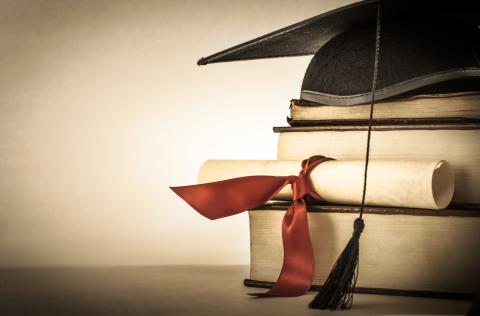Steve Prince – Power Made Perfect In Brokenness
Feb 17,2017
Visiting artist Steve Prince, an Assistant Professor of Art and Artist in Residence at Allegheny College in Meadville, PA, gave Gordon art students the unique opportunity to work with him on a mural installation displayed in his new exhibit: “Power Made Perfect in Brokenness.”
Two days prior to his art show’s reception, Prince and Gordon art students worked on a collaborative mural in the smaller gallery titled, “Mayflowers and Stranger Things,” to emphasize the productivity of a community working together as one unit to effectively make change. “I think there is something powerful as we all work together,” said Prince of the process, “the actual act of working together in the studio is exemplifying the thing we need to do as a society.”
Using charcoal and erasers, the mural represents the American society as a garden. Prince instructed students to draw what they saw as negative aspects of the American society on the left wall, while on the right wall students drew the changes they would like to see in response to those problems. Prince strayed away from coining the mural on the right an “utopia,” because what is being brought to light is not some perfect place resembling heaven, but the results of doing God’s work while alive on this earth.
The center wall, drawn by Prince, depicts a woman kneeling both in prayer and in action as she attempts to weed out the problems that the American society has planted in the past. Her body overlaps onto the other murals to connect the two walls into one cohesive piece, and in her hand she holds a mayflower–a representation of Massachusetts state flower, as well as the ship that transported the pilgrims to Plymouth Rock in 1620.
In addition to the installation, the art exhibit features several of Prince’s own linoleum prints and pencil and charcoal drawings. Prince, born and raised in New Orleans, draws inspiration for his work from a New Orleans funerary tradition called the “dirge” and the “second line.”
The “dirge” is a lament for the dead, especially one that is performed as part of a funeral rite. It can be a mournful song, piece of music or poem. The “dirge” can also be referred to as the “first line” because it is traditionally the music played during the funeral march from the funeral home to the cemetery.
After the body of the deceased is laid to rest, the “second line” begins, a jaunty, syncopated rhythm that is often used in the blues and jazz music associated with New Orleans. The “second line” is supposed to characterize the celebration of the rising of the spirit after death.
Prince recognizes this constant battle between the “dirge” and the “second line” as key indicators of the redemption he struggles with as a follower of Christ. “The dirge and the second line, we do it every day,” said Prince.
The New Orleans native goes as far as to suggest that his faith and his art are more intertwined than the viewer can see. He said, “No matter how hopeless my work can seem, there’s always hope.”
The exhibit will be on display in the Gallery at Barrington Center for the Arts from Oct. 22 to Dec. 2.






